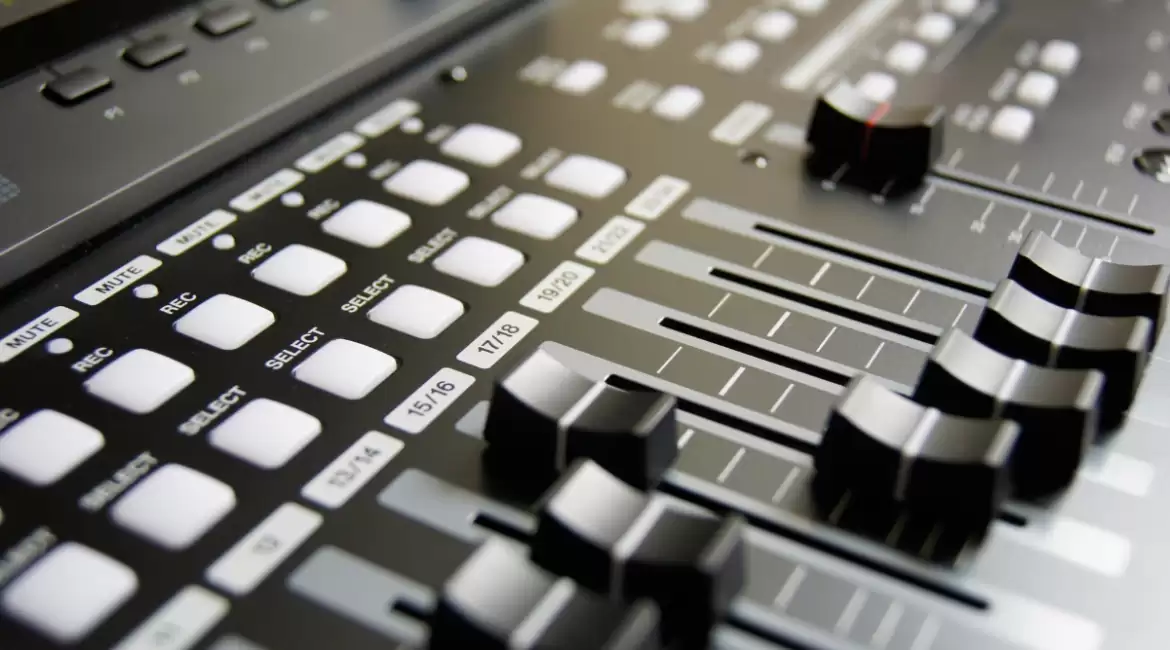Funk music, with its infectious rhythms, soulful melodies, and undeniable groove, stands as a vibrant and influential genre within the musical landscape. Born from the rich tapestry of Black R&B, soul, and jazz traditions in the mid-20th century, funk has evolved into a cultural phenomenon that continues to captivate audiences worldwide. In this comprehensive exploration, we delve into the essence of funk music, tracing its origins, charting its historical trajectory, and illuminating its defining characteristics. From the pioneering efforts of icons like James Brown and George Clinton to the innovative sounds of contemporary funk artists, this journey offers a deeper understanding of funk’s enduring legacy and its profound impact on the world of music. Join us as we embark on a rhythmic odyssey through the vibrant world of funk music, where groove is king, and the spirit of innovation knows no bounds.
What is Funk Music?
Funk music, originating in the mid-1960s from the vibrant Black R&B, soul, and jazz scenes, stands as a dynamic testament to the power of rhythm and groove in music evolution. It’s not just a genre; it’s a pulsating journey through the syncopated beats and infectious bass lines that define its signature sound.
At its core, funk music is a celebration of rhythm, characterized by its distinctive bass lines that groove with an irresistible syncopation, and its unwavering drum patterns that propel listeners to move instinctively. It’s a genre that thrived during the 1970s and ’80s, captivating audiences with its infectious energy and undeniable groove.
Pioneering figures like James Brown, often hailed as the “Godfather of Soul,” and George Clinton, the visionary leader of Parliament-Funkadelic, played pivotal roles in shaping the landscape of funk music. Their innovative approach not only influenced countless musicians but also laid the groundwork for the emergence of other genres such as disco, hip hop, and even funk metal.
Through their pioneering efforts, funk music transcended mere musical boundaries, becoming a cultural phenomenon that continues to inspire and influence artists across generations. From its roots in the vibrant streets of mid-20th century America to its enduring legacy in contemporary music, funk remains a testament to the power of rhythm, groove, and the unyielding spirit of musical innovation.

History of Funk Music
Funk music, a vibrant musical genre with roots deeply embedded in the mid-twentieth century, continues to exert its influence on contemporary artists, serving as a testament to its enduring relevance and impact. Embarking on a journey through its rich history unveils a tapestry woven with innovation, creativity, and cultural resonance.
The genesis of funk can be traced back to the groundbreaking contributions of James Brown, whose pioneering efforts in the late 1950s and early 1960s laid the groundwork for the genre’s distinctive sound. Brown’s ingenious utilization of the “on the one” rhythm, accentuating the first downbeat of the measure, alongside his dynamic performances with his band The Famous Flames, marked the birth of what would soon be recognized as the funk beat.
As the 1960s progressed, funk began to proliferate, finding expression through a myriad of dedicated bands and artists. Among these trailblazers were Sly and the Family Stone, whose infusion of psychedelic elements added a colorful dimension to the genre’s sonic palette. Meanwhile, the visionary George Clinton, spearheading Parliament Funkadelic, embarked on a sonic odyssey that birthed the innovative P-Funk style, blending psychedelia with Afro-centric messaging to create a truly revolutionary musical experience.
The zenith of funk’s popularity dawned in the 1970s and 1980s, a golden era characterized by an explosion of creativity and innovation within the genre. Icons like Chaka Khan, hailed as the “Queen of Funk,” and her band Rufus, alongside the irrepressible Rick James with his seminal hit “Super Freak,” epitomized the infectious energy and groove that defined the era. Meanwhile, Michael Jackson’s groundbreaking album “Thriller” captivated audiences worldwide, featuring the funk-inspired anthem “Billie Jean,” further solidifying funk’s indelible imprint on popular music.
Across genres and musical landscapes, funk’s influence reverberated far and wide, permeating the realms of jazz, Motown, and R&B. Visionaries like Herbie Hancock and Miles Davis embraced funk’s rhythmic complexities, infusing their compositions with its pulsating energy. Similarly, Motown legends such as Stevie Wonder and Marvin Gaye, alongside trailblazing groups like The Meters, The Isley Brothers, and Kool and the Gang, embraced funk’s infectious grooves, enriching their musical tapestries with its dynamic rhythms.

4 Characteristics of Funk Music
Syncopation
Funk music, renowned for its infectious rhythms and undeniable groove, is characterized by a myriad of distinctive traits that contribute to its unmistakable sound and enduring popularity. Among these defining characteristics, syncopation emerges as a fundamental element, imbuing funk compositions with a dynamic energy that propels listeners to move instinctively to the beat.
At the heart of funk’s syncopated allure lies its intricate interplay of rhythm and melody, particularly evident in the guitar and bass lines that serve as its rhythmic backbone. Through clever manipulation of accents and off-beat phrasing, funk musicians craft polyrhythmic textures that defy conventional expectations, creating a sense of tension and release that is essential to the genre’s danceability.
Iconic funk anthems such as “Sex Machine” by James Brown, “Papa’s Got a Brand New Bag,” and “Super Freak” by Rick James epitomize the genre’s mastery of syncopation. In these seminal tracks, syncopated rhythm guitar riffs intertwine with pulsating basslines, laying down a foundation of groove that is impossible to resist. It is through this rhythmic complexity that funk music invites listeners to surrender to the irresistible urge to dance, transforming mere listeners into active participants in the musical experience.
Strong downbeats, followed by 16th note grooves
Another defining characteristic of funk music lies in its utilization of strong downbeats coupled with intricate 16th note grooves, a rhythmic dynamic that adds layers of complexity and depth to the genre’s sonic tapestry. Renowned funk pioneer James Brown, often hailed as the architect of funk, famously instructed his band to play “on the one,” emphasizing the importance of accentuating the first downbeat of the measure with unyielding precision and force.
This emphasis on the downbeat serves as a cornerstone of funk’s rhythmic structure, providing a solid foundation upon which the entire composition rests. By anchoring the rhythm with assertive downbeat accents, funk musicians create a sense of rhythmic stability and drive that is essential to the genre’s infectious groove.
However, it is the interplay between these powerful downbeats and the intricate 16th note grooves that truly defines funk’s rhythmic identity. Following each resounding downbeat, funk musicians unleash a barrage of intricate 16th note riffs, weaving a complex web of rhythmic patterns that electrify the listener’s senses and propel the music forward with relentless momentum.
This juxtaposition of strength and intricacy exemplifies the dexterity and musicality inherent in funk music, as exemplified by James Brown and his pioneering approach to rhythm. By marrying the driving force of strong downbeats with the nimble agility of 16th note grooves, funk musicians create a dynamic rhythmic landscape that captivates audiences and invites them to immerse themselves fully in the irresistible groove.
Seventh chord variants
In the realm of funk music, the exploration and utilization of seventh chord variants stand out as a pivotal aspect, adding a layer of harmonic richness and complexity that enhances the genre’s sonic landscape. Central to the funk aesthetic is the incorporation of densely voiced chords, with a particular emphasis on 7th chords, along with their various extensions such as major and minor 9th chords, and 13th chords.
These extended chords serve as pillars of funk harmony, infusing compositions with a sense of depth and sophistication that elevates the music to new heights. From the soulful grooves of classic funk tracks to the experimental sounds of contemporary funk fusion, the use of seventh chord variants is ubiquitous, serving as a cornerstone of the genre’s harmonic vocabulary.
Moreover, funk musicians often prolong these chords for multiple measures, allowing players to fully immerse themselves in the groove and explore the nuances of each chord voicing. This sustained chordal texture not only adds a sense of continuity and fluidity to funk compositions but also creates opportunities for improvisation and musical interaction among band members.

Grooves driven by bass guitar
The driving force behind the irresistible grooves of funk music lies in the profound influence of bass guitar, with virtuosic bassists emerging as seminal figures within the genre’s rich tapestry of sound. Among these influential musicians, luminaries such as Bootsy Collins of Parliament-Funkadelic and Larry Graham of Sly and the Family Stone stand out as trailblazers whose innovative bass playing revolutionized the landscape of funk music.
At the heart of funk’s rhythmic propulsion is the bass guitar, whose deep, resonant tones provide a solid foundation upon which the entire ensemble builds its groove. With roots deeply entrenched in the rhythm and blues tradition, funk bassists employ a distinctive playing style characterized by thumping, percussive techniques and intricate melodic embellishments, transforming the instrument into a veritable powerhouse of rhythmic expression.
Bootsy Collins, with his larger-than-life persona and infectious grooves, epitomizes the spirit of funk bass playing. As a key member of Parliament-Funkadelic, Collins’ innovative approach to bass guitar not only redefined the role of the instrument within the ensemble but also elevated funk music to new heights of sonic experimentation and creativity. His bold, funk-driven bass lines served as the backbone of numerous hit records, captivating audiences with their infectious energy and undeniable groove.
Similarly, Larry Graham’s pioneering contributions to funk bass playing have left an indelible mark on the genre’s legacy. As the founder of the “slap and pop” technique, Graham revolutionized the way bass guitar was played, infusing funk compositions with a newfound sense of rhythmic dynamism and percussive flair. His innovative approach, showcased prominently in Sly and the Family Stone’s iconic hits, laid the groundwork for generations of bassists to follow, inspiring countless musicians to explore the expressive potential of the instrument.
Summary
In the ever-changing landscape of popular music, funk stands as a testament to the power of rhythm, groove, and artistic expression. As we celebrate its past, present, and future, let us embrace the spirit of funk and its enduring message of unity, liberation, and the relentless pursuit of musical excellence. Long live funk music, a timeless force that continues to move us, body and soul.
Author Profile
Latest entries
 Break DanceJune 8, 2024How to do the turtles move
Break DanceJune 8, 2024How to do the turtles move Break DanceJune 8, 2024Why every dancer should take a beginner dance class
Break DanceJune 8, 2024Why every dancer should take a beginner dance class Break DanceJune 8, 2024How to take a dance class
Break DanceJune 8, 2024How to take a dance class Break DanceJune 1, 2024How to dance more “full out”
Break DanceJune 1, 2024How to dance more “full out”






Leave a reply